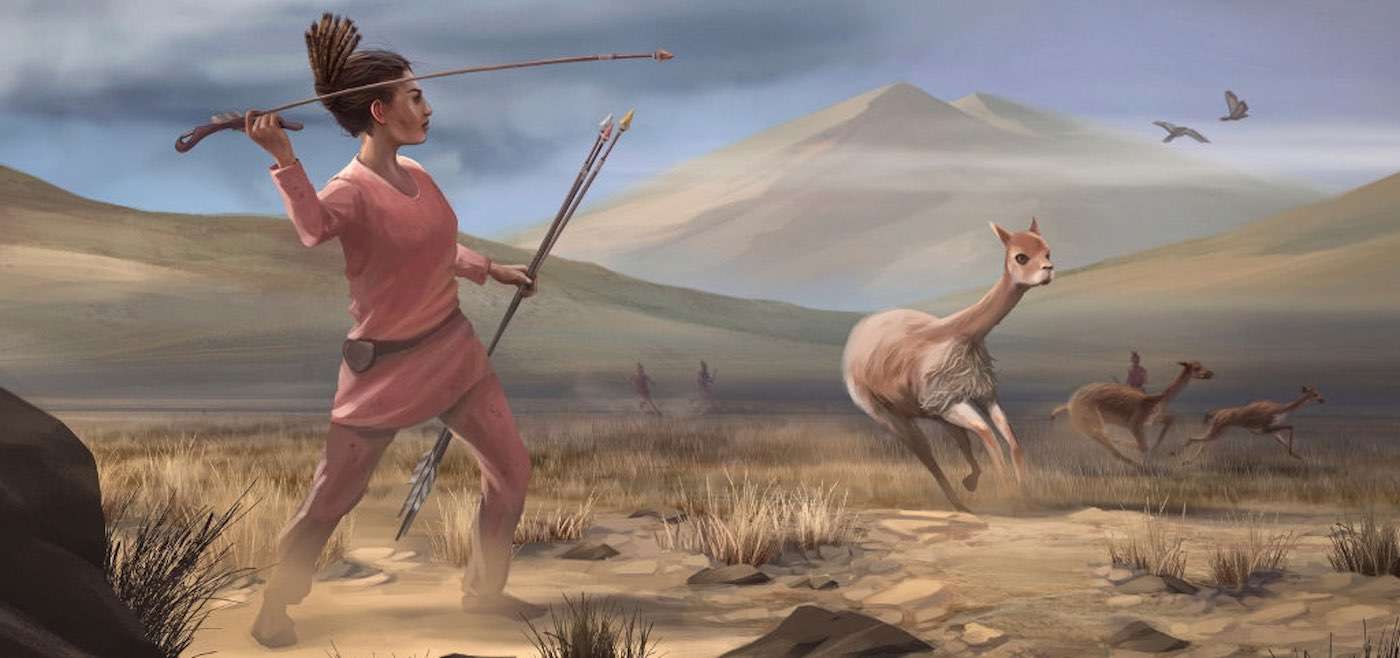'Most Important Prehistoric Discovery in a Century' Revealed by British Museum
The British Museum unveiled the most important piece of prehistoric art found in Britain in the last 100 years-a 5000 year-old chalk drum.

When a grave containing the remains of a 9,000-year-old human alongside an extensive hunter's tool kit was discovered, archaeologists reckoned they had found a great chief-a revered hunter.
However, bio-archaeologist Jim Watson of the University of Arizona informed the discoverers who were working high in the Peruvian Andes mountains that, based on the dimensions of the bones, the "big" man as they had been calling it, was actually a woman.
After the remains were indeed proven to be female, it caused the team, a mixture of anthropologists and archaeologists from the Universities of California and Arizona, to reexamine other reports of burials hypothesized as belonging to male hunters and found that an additional 10 had been incorrectly recorded as male.
Beginning with an influential 1966 Chicago symposium, researchers believed that "man the hunter" was separated in his paleolithic duties from women, who spent their time gathering.
Archaeological evidence of female hunters has been scant, and anthropological examinations of hunter-gatherer groups today, like the Hadza of Tanzania or the San in Namibia, show that indeed men hunt big game and women gather plant-based food.
The team hadn't set out to study the gender dynamics of hunting in the prehistorical Andean world, but nevertheless the corresponding report on their discoveries included a meta-analysis of studies done on Andean gravesites and determined that of those buried with hunting tools, 10 were female while 16 were male, suggesting that hunting was "gender-neutral".
Considering that for thousands of years, there were only two main jobs to do: hunting and gathering, it would seem unbelievable that there was never any line-blurring in gender responsibilities of food acquisition.
Many things could have caused a female in Andean society to put down the basket and pick up the atlatl-like fewer hunting-age males in society due to conflict with other tribes, or males dying on hunting expeditions.
In mythological pantheons across the world, it's not uncommon for hunting to be in the domain of a goddess, such as Skaí°i, repeatedly mentioned in Old Norse epic poetry, or Diana, the Hellenistic huntress deity that was also appropriated by the Romans.
In Egypt, there were female and male deities of hunting. Neith was a female goddess that is one of the oldest recorded deities in Egypt, when she was often revered for her hunting characteristics.
Today, according to Chris Dorsey writing for Forbes, the fasting-growing segment of the population in America who hunt is women. His findings suggest it has a lot to do with a desire to get away from industrial agriculture and over-processed meat.
"I wanted to know what I was feeding my family," one South-Carolina huntress told Forbes. "Wild game is hormone, steroid and antibiotic-free, the healthiest meat you can eat."
"Women have always been able to hunt and have in fact hunted," archaeologist Bonnie Pitblado of the University of Oklahoma, Norman, told Science Magazine reporting on the discovery in the Andes. "These women were living high up in the Andes, at 13,000 feet full time; if you can do that, surely you can bring down a deer."
In Why Women Hunt, K. J. Houtman writes, "For some, it's a sense of independence that comes from possessing the skills to hunt, the ability to provide food without having to rely on others."
National Geographic says the percentage of women who hunt in America rose by 25% between 2006-2011, and reports that hunting workshops for women around the country tend to be booked solid for months in advance.
Whether it's to provide food for one's family, to spend long periods outdoors in nature, or to perfect a skill, the modern huntress-like this ancient woman with her 20-stone projectile points and blades for cutting and scraping her catch-hearkens back to ancient longings and necessities.
SHARE This Story of Women Adventurers Through the Ages on Social Media…
Be the first to comment